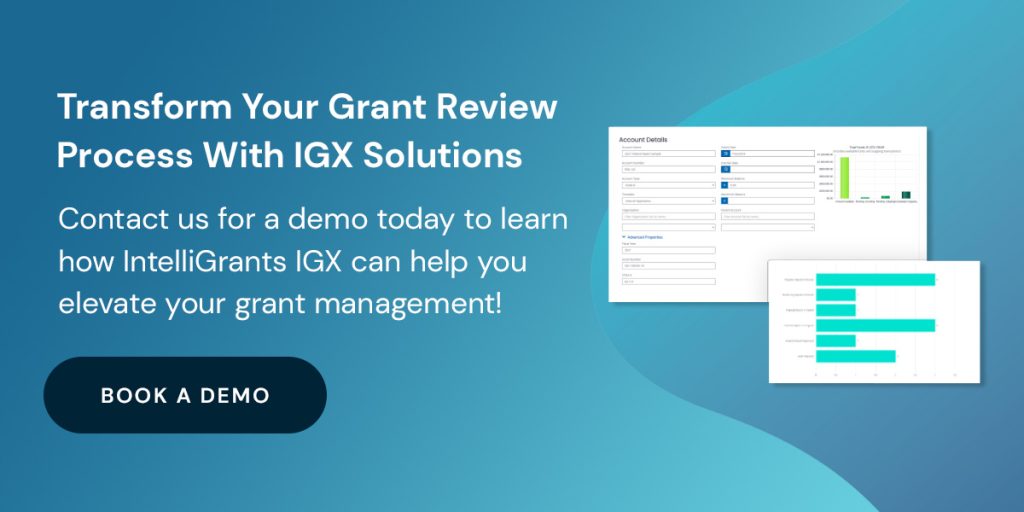
Table of Contents:
Grant application review can be an extremely lengthy process. Gathering the reviewers and resources you need to get through grants efficiently takes time, planning and tools. While traditional grant reviews can consume grantmakers’ time, you can elevate the process with the right tools and techniques.
Whether you’re just getting started with grant application reviews or you’re a seasoned veteran, getting quality tools can make all the difference. Let’s break down common grant review challenges and how specialized tools and techniques can help you overcome them. With the right preparation, you’ll create a grant process that promotes trust, efficiency and growth for everyone involved.
Reviewing grant applications takes time. Giving each application your full attention while juggling other proposals can lead to a slow, inefficient process. While grant management has many challenges, grant review on its own has some roadblocks, too. Completing this process manually can lead to obstacles like:
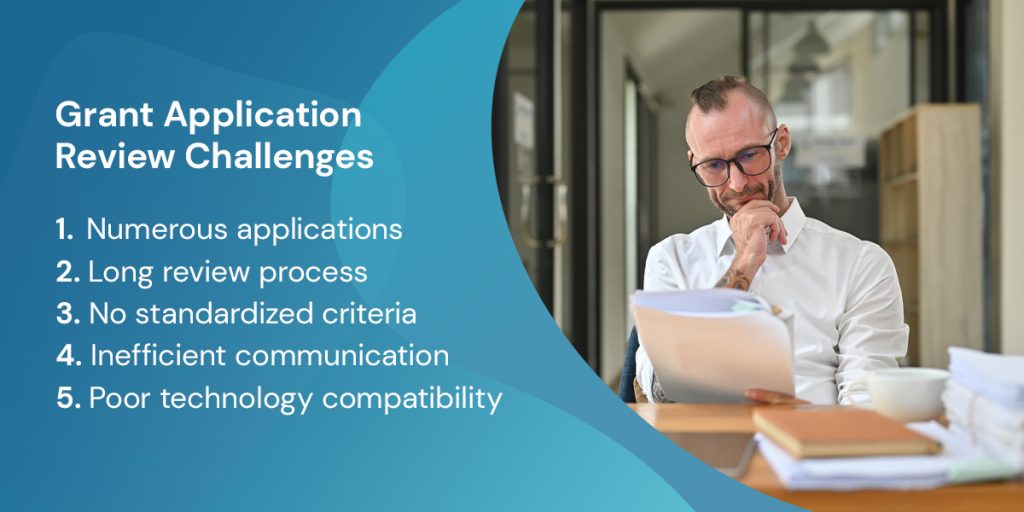
Like many processes, finding the right tools and techniques will help streamline your grant review process. Your team can boost productivity while mastering work, creating an effective grant review process. Consider these tools and techniques to help you elevate your organization’s grant review.

Grant management software is one of the best tools for anyone involved in the grant process. This software collects and organizes applications, maintains evaluation comments and tracks application progress. You can personalize your software to meet your review needs. Features like built-in application forms, automated reminders and collaborative reviews help elevate your review process. Reviewers can spot deadlines, keep track of applications and avoid sifting through piles of papers while they work.
The software’s strength lies in streamlining your review process. With the right software, reviewers can access everything they need in one place. You can configure your software to include features like scoring rubrics or feedback templates. These tools let reviewers complete the process more quickly without forgetting essential information. With more time spent on the actual review and less time spent on administrative takes, you’ll create a better process with grant management software.
Online application portals can come with grant management software or as a separate tool. These portals give you a centralized platform where applicants can easily submit, access and track their applications online. Paper-based submissions are time-consuming to prepare, mail and track. With digital applications in online portals, you can reduce administrative burdens and streamline your data management.
Applicants can use these portals to get real-time progress tracking, automated checks for accuracy and completeness and saved draft submissions. Additionally, online portals can enhance communication between applicants and administrators. With built-in messaging systems, FAQs and support resources, you’ll improve transparency and reduce communication confusion for applicants.
You can also improve the grant review process through collaborative platforms. Traditionally, reviewers might work through each application alone, only discussing their findings together at the end of the process. With collaborative platforms, reviewers can work together online on every application. Collaboration platforms let reviewers share their thoughts in real-time.
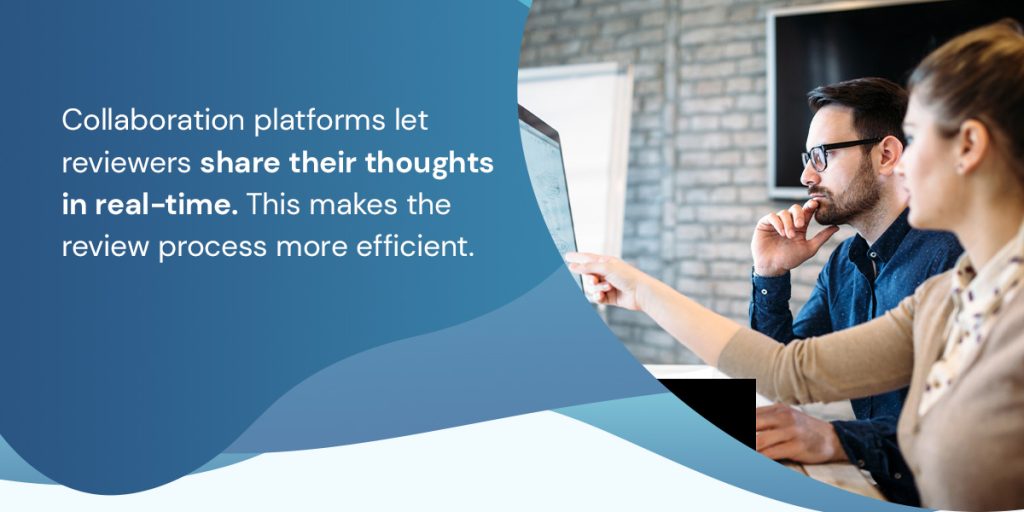
This makes the review process more efficient, letting reviews discuss opinions together whenever they want. It’s also easier to come to a consensus and track application progress when everyone is consistently up to date with each other’s work. Online platforms help make the process more visible, helping reviewers work together more easily.
If you want to take steps toward eliminating biases, consider implementing an anonymous review process. Keeping reviewers from knowing who submitted each application at first can help remove biases from the review process. Each reviewer can fully examine the applications without unconsciously biasing themselves in favor of or against applicants.
You can also collect data on your past grant winners to see if you’re awarding grants with some biases. Are there communities you’re underserving? Anonymous reviews and past data can help you create a more fair, transparent grant approval process.
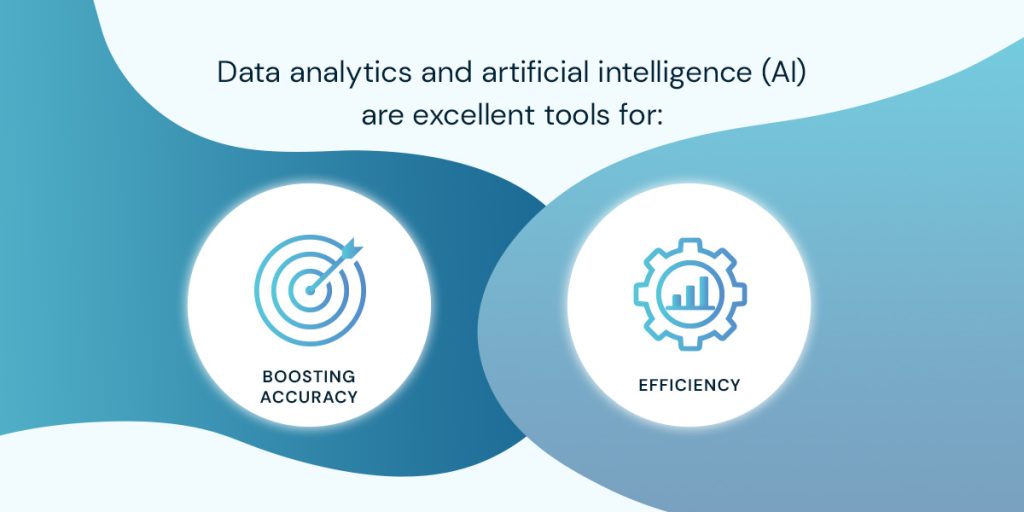
Data analytics and artificial intelligence (AI) are excellent tools for boosting accuracy and efficiency during grant application reviews. Your organization can use machine learning algorithms and large datasets to automate initial application screenings. These tools help you flag outliers and identify key criteria, improving the screening process.
AI-powered screening tools can analyze text for red flags, keywords, trends and patterns. You can use this technology to accelerate the screening process while reducing errors. Additionally, AI can learn from data and feedback loops, continuously improving its processes for better results. You’ll expedite the review process while cultivating long-lasting, high-performing tools.
Creating a culture of continuous improvement is a technique that helps build a stronger review team. If you want to improve your review process and promote flexibility, you need to encourage growth. Feedback is a great way to get your team to continue growing. Use feedback from surveys and focus groups to get input from stakeholders, staff, applicants and reviewers. This feedback is a valuable tool that helps you identify areas for improvement and strategize ways to perform more efficiently.
You can also use process evaluations and performance metrics to spot trends, track progress and measure improvement impacts. Focusing on continuous improvement grows your organization’s efficiency and success. It will maximize your grantmaking efforts and build a more successful team.
Now that you know what to watch out for and what you can use to help your team, it’s time to revamp your grant review process. With the right tools and review panel, you’ll create a successful grantmaking system that promotes innovation and community. Here are the resources you need for an adaptable, streamlined grant review process:
As part of your planning, you should figure out what resources you need. Your software, review team and tactics should all fit your organization’s size. Understanding the resources you need and how to find the right amount will help you perfect your grant review process. You can use data from previous grant cycles to help you predict your next cycle’s needs.
Ask these questions when organizing your grant review process:
With each grant cycle, you can implement new feedback and changes to refine your process further. Regularly evaluating your process for biases, inefficiencies and confusion will help your organization improve. The better your review process, the more you contribute to grant writing, inspiring the next generation of successful applicants with community-changing project proposals.
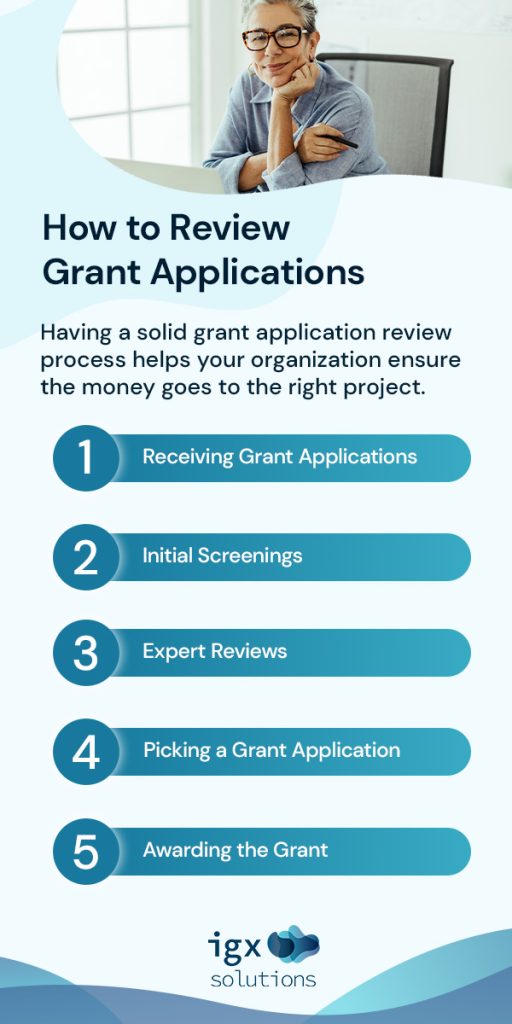
Organizations need a thorough review process to decide who receives grant money. Having a solid grant application review process helps your organization ensure the money goes to the right project.
Remember, some organizations will have more intensive application processes than others, depending on the area and the grant competitiveness. Adapt your process to your organization’s needs and demands.
Groups need to submit their applications to your organization to start. Your organization will have specific forms applicants should fill out. Standard information includes who the organization is, why they want the grant money and how they’ll use it. A grant application should have all the information the reader needs to understand how the applicant will make a positive impact with the funds. As a grant reviewer, you might have specific guidelines and additional requirements that applications must follow for an application review.
Once you’ve received all the applications in accordance with the deadline, it’s time for initial screenings. The reviewer will look over the applications to ensure all the necessary information is included in the application. If information is incorrect, requirements are unmet or something is missing, the application fails to meet initial screening standards. At this point, the application might get rejected. Your organization may also allow corrections, but it depends on your initial guidelines for grant applications.
After initial screenings, the passing applications go to a panel of experts. These experts have experience in the grant field. They might also be people who work for the grant providers, representing their best interests. Experts will read through applications and evaluate each one. Budget, proposed project and potential impact are all essential considerations for grant providers. The experts will break down the positives and negatives of each grant, working to narrow down the best grant candidates.
Experts will set out their final list of potential choices. Since there’s limited funding, reviewers have to decide which applications will get funding. Often, there are more excellent applications than there are grant money. Reviewers will select the applications that best fit the grant while keeping the total financing within the budget. They try to pick the projects with the greatest potential for making a positive impact, maximizing their money’s effects.
Finally, chosen applicants get to receive the grants. The organization offering the grant will let each applicant know if they’ve gotten the grant and how much funding they’ll receive. The funding is carefully distributed, with specific details for how each grant winner should use the money. Applicants who missed out on funding can try again during the next round for the grants they missed out on. Additionally, they might receive feedback from reviewers to help them improve their applications next time.
Improving the application process can help applicants get the necessary grants without delaying their projects and funding. A faster, smoother turnaround time can also help grantmakers get projects done more quickly. The faster you can pick the right applicants, the more effective your funding can be. Using different strategies to improve your review process can impact how your funding changes communities.
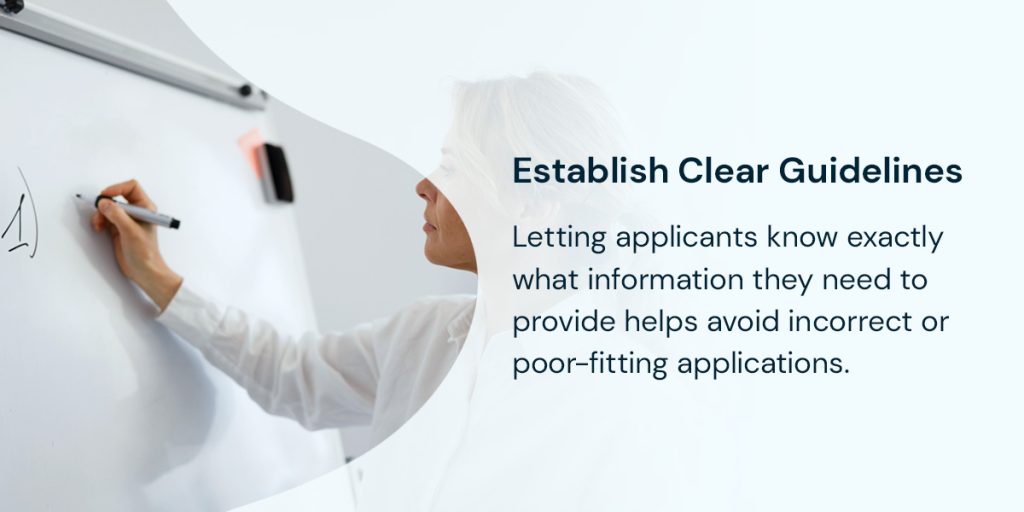
The clearer your application and review guidelines, the smoother the grant application process will be. Letting applicants know exactly what information they need to provide helps avoid incorrect or poor-fitting applications. Specifying who can apply, what projects are eligible and how you evaluate applications is essential. You’ll let applicants know what they need to do and allow reviewers to follow standardized guidelines for a more transparent review.
Technology is your friend in grantmaking and review. Investing in technology can help you streamline your grant review process, creating a smooth, painless process. Grant management software is essential for any grant reviewer or applicant — it lets you easily submit and keep track of all the essential grant information.
Additionally, use filters, tracked communications, bulk updates and other convenient tools to help you automate the grant review process. Investing in quality technology can make all the difference in your grant review process.
Get your grant reviewers to work together. While each reviewer should be working from the same criteria, leaving reviewers to work alone might lead to inconsistencies or exhaustion. Asking reviewers to work together on applications helps them reach a consensus more quickly. They can decide on the group standards for the criteria, give feedback to each other and ask questions. Creating a collaborative culture helps standardize your grant review process and gives reviewers the confidence they need to perform their work effectively.
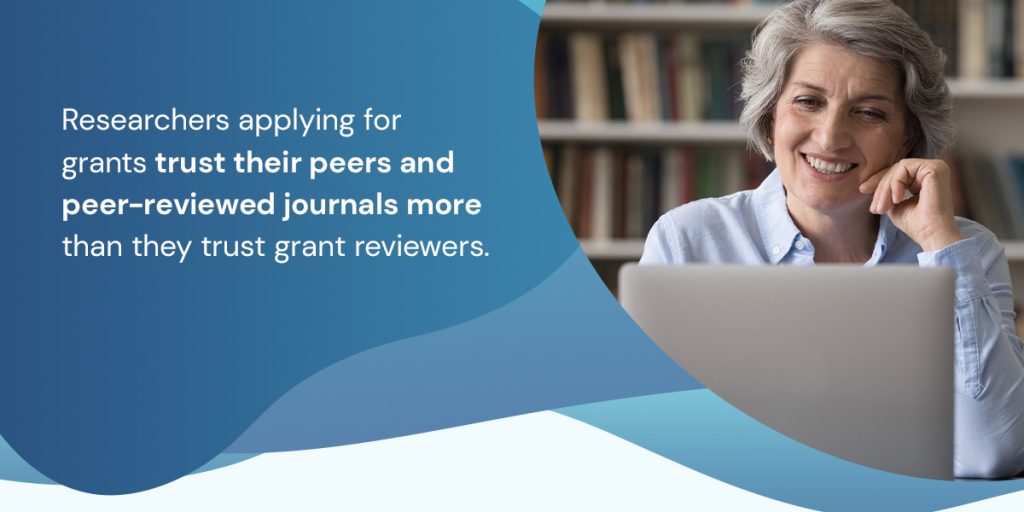
Try to build a varied, expert panel of reviewers. Researchers applying for grants trust their peers and peer-reviewed journals more than they trust grant reviewers. However, research shows that applicants will trust your review more if your review panel includes experts in related fields. As you build your review panel, ensure you include experts on topics related to your grant. Combining expert knowledge with transparency will encourage potential applicants to work with you, helping you to put funding into quality projects.
Reviewers will have an easier time reviewing grants if they have proper training. Preparing reviewers for the unique grant review process helps them work more quickly and confidently. Training each reviewer helps them understand your organization’s goals and priorities. It also lets them know the exact criteria they should be reviewing. You’ll create a team of skilled reviewers with an eye for detail and an emphasis on critical thinking.
Everyone has biases, but it’s important to make the grant review process as fair as possible. Reviewers and organizations need to consider their biases and potential biases in the review process. Critically analyzing these biases can help transform your review process into an equitable process. Biases limit the scope of our projects and make grants less effective — opening up the floor to everyone provides greater access to all possible resources.

When reviewing an application, be aware of biases related to conflicts of interest, gender, sexuality, race, ethnicity and affiliation. You should evaluate each grant application based on its qualities rather than its source.
Giving applicants feedback is a great way to improve the grant review process going forward. Letting applicants know why they were rejected or chosen and how they can improve is a rewarding strategy. Getting feedback helps applicants improve in the future, reducing the number of incorrect applications or proposals that fall short of your requirements. Feedback can include written evaluations from reviewers, online surveys or even one-on-one meetings.
Offering feedback shows your organization’s commitment to transparency, boosting trust in the process. Additionally, you’ll support the development of stronger grant proposals in the future.
Move beyond outdated systems and limited resources with IntelliGrants® IGX. IGX Solutions has developed IntelliGrants IGX to streamline the grant application review process. With IntelliGrants IGX, you’ll experience intuitive navigation, quick turnaround times, and greater insight into performance metrics.
Are you tired of an inconsistent reviewing process slowing your operation down? Our configurable tools and personalized features are designed to align seamlessly with your organization’s workflow. You’ll enjoy efficient grant handling and increased flexibility with IntelliGrants IGX. Whether you’re a small nonprofit or large government agency, IntelliGrants IGX delivers fully configured packages and personalized data gathering.
Upgrade to IntelliGrants IGX and revolutionize your grant management process. Our software allows you to easily track, organize, and complete your application reviews. Contact us for a demo today to learn how IntelliGrants IGX can help you elevate your grant management!
